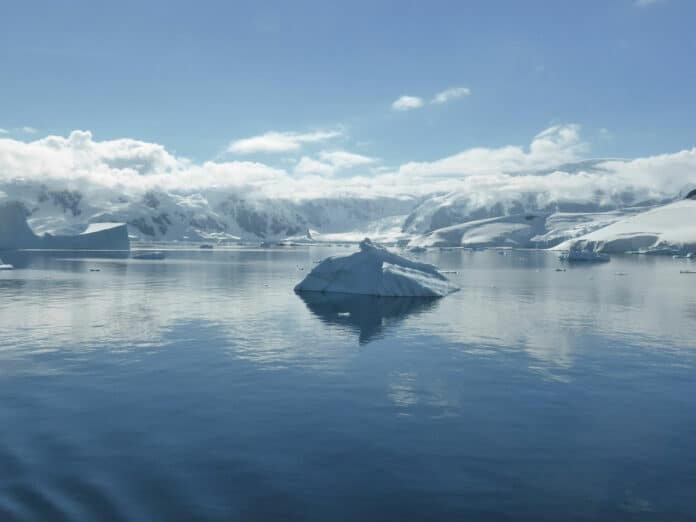Thwaites Glacier is among the fastest-flowing marine-terminating glaciers in West Antarctica, and its grounding-line-retreat rate has more than doubled in the past two decades. Between 1979 and 2017, Thwaites Glacier contributed 1.8 mm to the global sea level, with nearly half of that contribution in the most recent decade, making Thwaites the largest net contributor to sea-level rise among Antarctic glaciers.
A new study assesses ocean variability below Thwaites Eastern Ice Shelf (TEIS). The study, led by the University of East Anglia in the UK, discovered a process that can contribute to melting ice shelves in the Antarctic. According to scientists, adjacent ice shelves play a role in causing instability in others downstream.
According to experts, the amount of glacial meltwater flowing beneath the Thwaites Ice Shelf can be affected by a small ocean gyre nearby. More warm water can enter the areas below the ice shelf when the gyre is weaker, which causes the ice shelf to melt.
For the study, scientists collected a unique dataset from sensors installed beneath the Thwaites Ice Shelf. They noticed that the shallow water layers beneath it warmed significantly between January 2020 and March 2021. Most of this warming was caused by waters containing a significant amount of glacial meltwater pouring into the region below the Thwaites Ice Shelf from the Pine Island Ice Shelf, further east.
Lead author Dr. Tiago Dotto of the Centre for Ocean and Atmospheric Sciences at UEA said: “We have identified another process that could impact the stability of ice shelves, revealing the importance of local ocean circulation and sea ice.”
“Circumpolar Deep Water, a warm variety of Antarctic waters, is a key player in melting the base of ice shelves. However, in this study, we show that a great amount of heat at shallow layers beneath one ice shelf can be provided by waters originating from other melting ice shelves nearby.”
“Therefore, what happens to one ice shelf, can impact the adjacent ice shelf, and so on. This process is important for regions of high ice shelf melting such as the Amundsen Sea because one ice shelf sits next to the other, and the export of heat from one ice shelf can reach the next through ocean circulation.”
“These atmosphere-sea-ice-ocean interactions are important because they can prolong warm periods beneath ice shelves by allowing warm and meltwater-enriched water to enter adjacent ice-shelf cavities.
“Gyres potentially existing in other regions around Antarctica may also cause a greater number of ice shelves to be prone to intense basal melting associated with prolonged warm conditions, and as a result further contribute to global sea-level rise.”
These sensors transmitted the information needed to pinpoint ocean variations—such as changes in temperature and meltwater content—via satellite for more than a year. Because there was no significant melting at the locations where the sensors were set, the scientists surmised that the extra heat could not have originated locally at the Thwaites Ice Shelf. By combining the information with computer simulations to identify the origin of this heat, they found that the water that leaves the Pine Island Ice Shelf can access the areas beneath Thwaites Ice Shelf.
Model simulations and data gathered by tags affixed to seals were used to identify the process explaining how these waters penetrated the Thwaites Ice Shelf. Both of them demonstrated how a gyre close to the Thwaites Ice Shelf weakens throughout the winter, allowing greater heat to reach shallower locations below the ice shelf.
The summer of 2020–2021 in the Southern Hemisphere was particularly uncommon due to a significant concentration of sea ice in areas close to the Thwaites Ice Shelf, according to satellite images.
The scientists assumed that the gyre was even weaker than previously thought, which prevented the excess meltwater from neighboring ice shelves from being diverted away from that area by the currents and allowed it to enter the Thwaites Ice Shelf.
This further reduced the gyre’s power, allowing water with a larger concentration of glacial meltwater to enter beneath the ice shelf.
Journal Reference:
- Dotto, T.S., Heywood, K.J., Hall, R.A., et al. Ocean variability beneath Thwaites Eastern Ice Shelf driven by the Pine Island Bay Gyre strength. Nat Commun 13, 7840 (2022). DOI: 10.1038/s41467-022-35499-5
